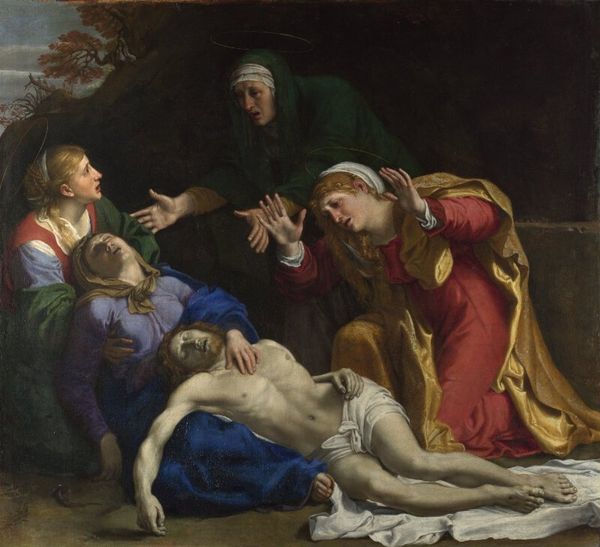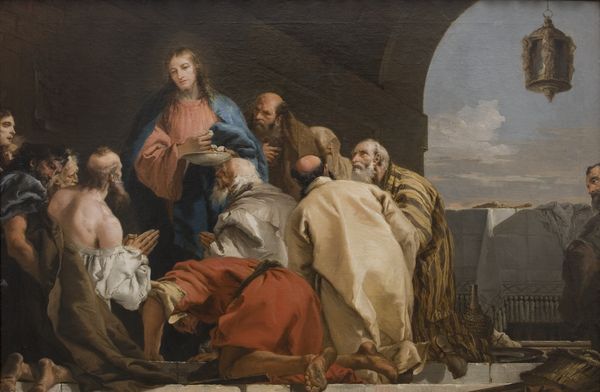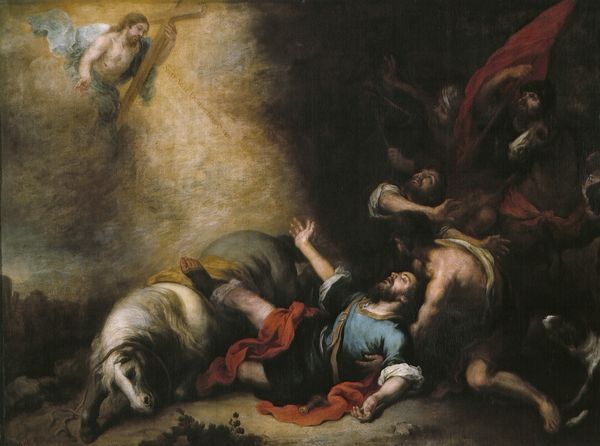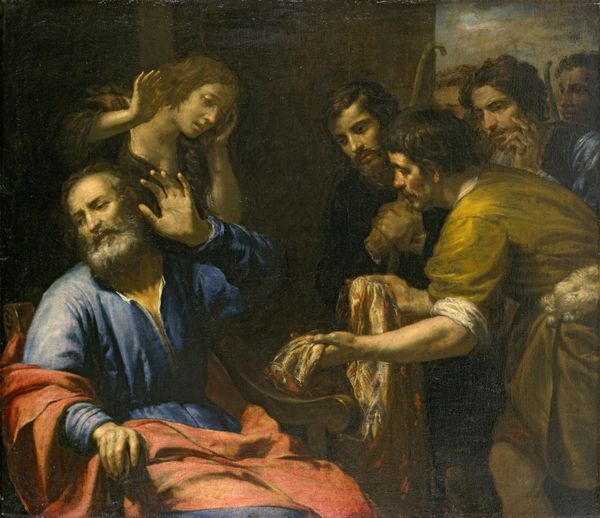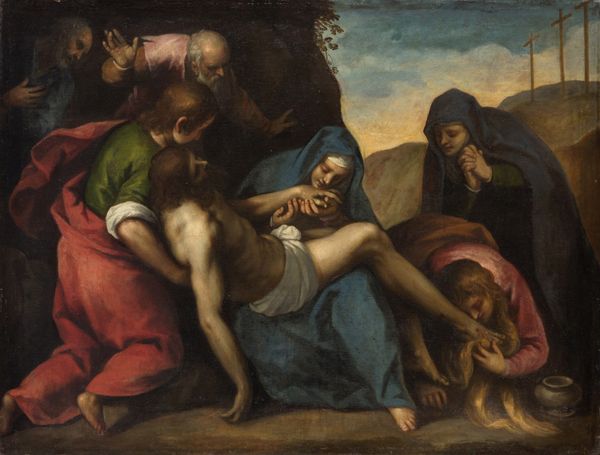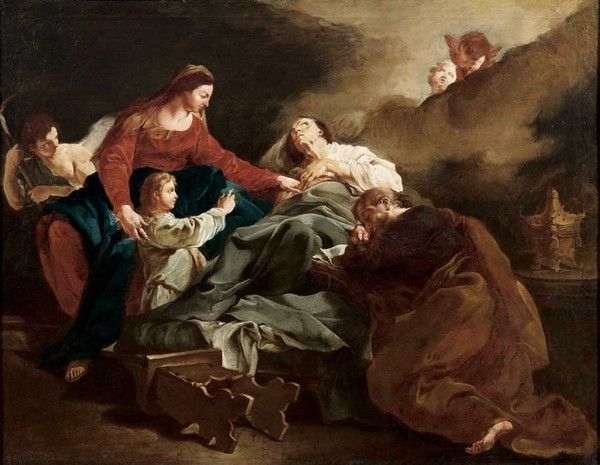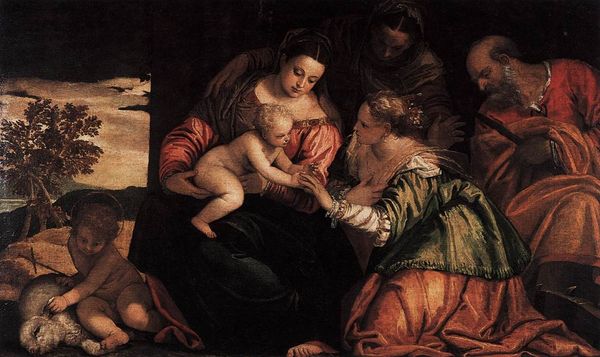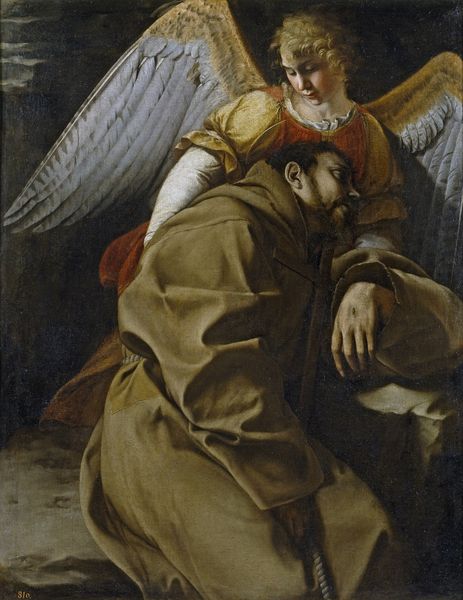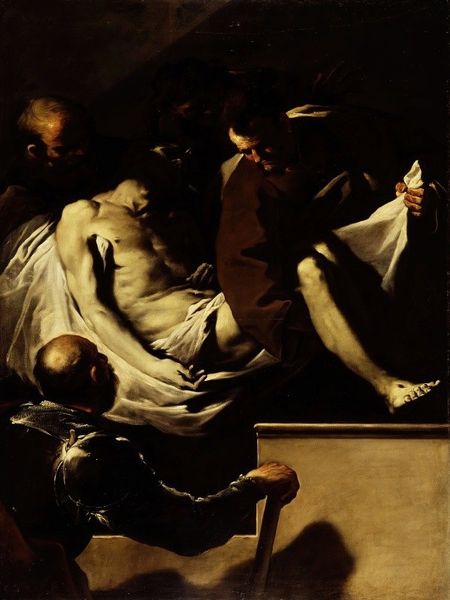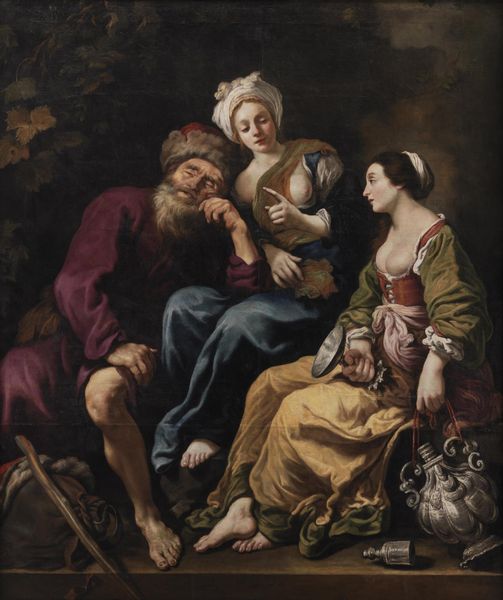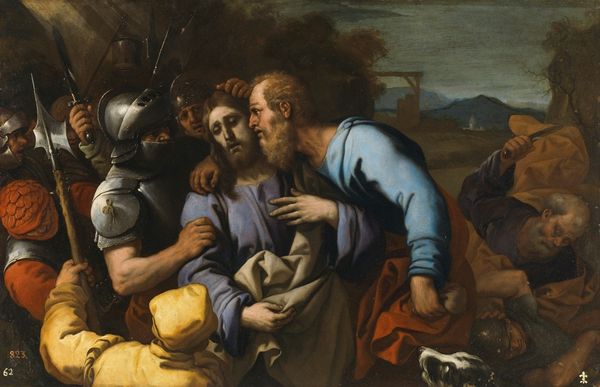
painting, oil-paint
#
portrait
#
narrative-art
#
baroque
#
painting
#
oil-paint
#
figuration
#
christianity
#
painting painterly
#
history-painting
#
angel
#
christ
Dimensions: 232 x 177 cm
Copyright: Public domain
Editor: Jusepe de Ribera’s "St. Peter Freed by an Angel," created in 1639 using oil paint, depicts this pivotal scene with a stark contrast. The subdued palette and dramatic chiaroscuro really amplify the miracle unfolding. What’s your perspective on how the materials contribute to the narrative here? Curator: Looking at it from a materialist perspective, it's fascinating to consider the cost of pigments like ultramarine blue in that era. The relative scarcity of vibrant colors versus the abundance of earthy tones wasn't just an aesthetic choice. It reflected social hierarchies and the economics of artistic production. The fact that Ribera invested in lighting this scene to show the expressions, makes me ask about the source for oil paints themselves: Who supplied them? What labor went into preparing those paints, and how did those processes affect Ribera’s workshop dynamic? Editor: So, the availability and cost of materials influenced artistic choices more than pure inspiration? I’d always thought the somber tone was a deliberate aesthetic preference for Baroque drama. Curator: Baroque drama certainly plays a role, but it is equally essential to acknowledge how material constraints and access to specific resources structured that drama. Think about the canvas itself – where did that fabric come from, who wove it, and how did its texture influence Ribera’s brushstrokes? Everything from the artist’s brushes to the model's clothes can point to broader socio-economic realities. Editor: That’s fascinating! So by examining the materials and their origins, we gain a better understanding of the society and economic structure that influenced the artist? Curator: Precisely! It forces us to think beyond the singular genius of Ribera and consider the complex network of labor, commerce, and consumption that made this painting possible. The 'miracle' on canvas also comes from many 'invisible hands' that participated in this material chain. Editor: This has really opened my eyes to a different way of interpreting art! Considering the process and the provenance adds another layer to appreciate. Curator: Exactly! It transforms our appreciation from passive observation to active investigation, revealing art's deep connection to the world beyond the canvas.
Comments
No comments
Be the first to comment and join the conversation on the ultimate creative platform.
